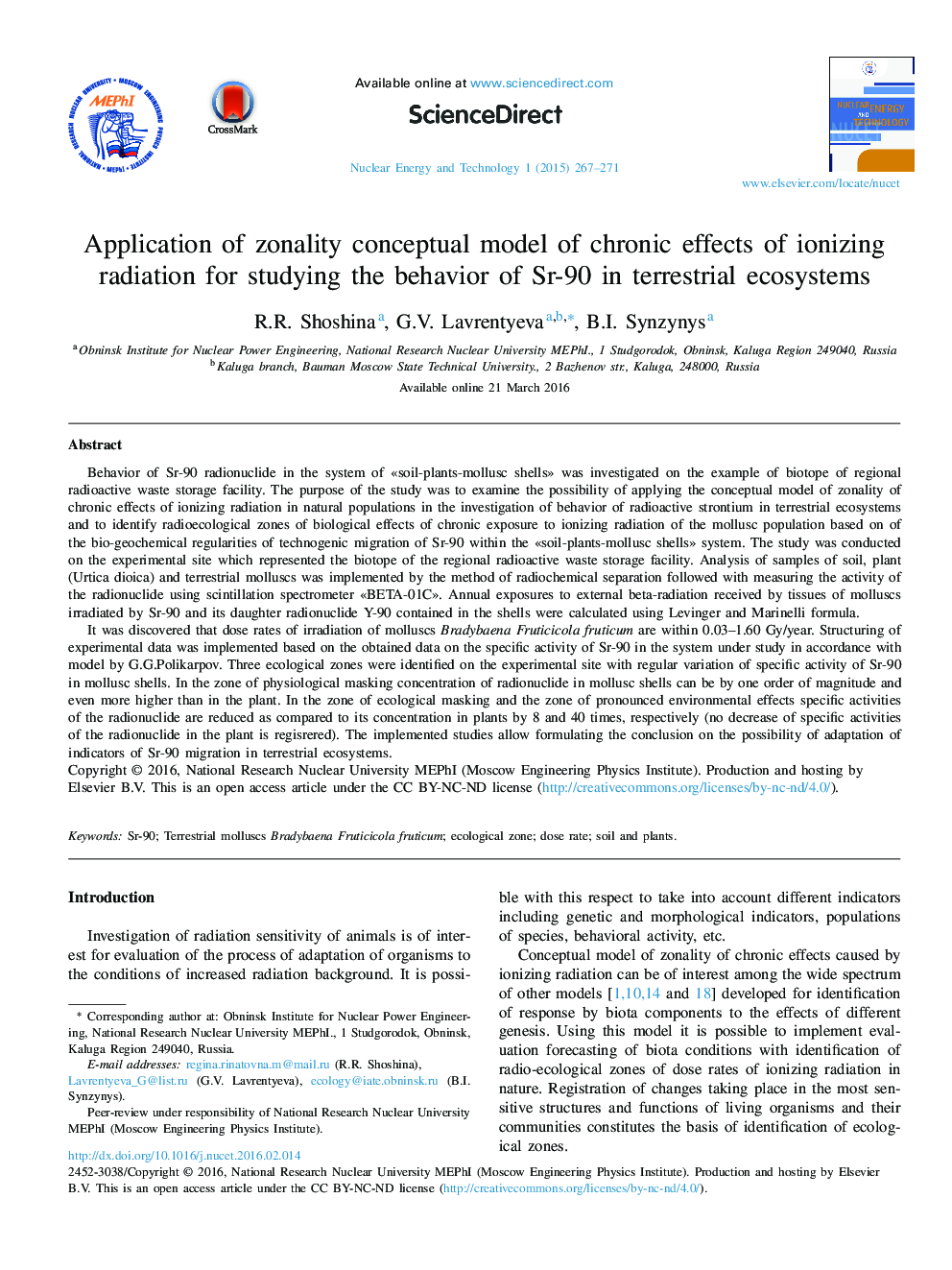| Article ID | Journal | Published Year | Pages | File Type |
|---|---|---|---|---|
| 366584 | Nuclear Energy and Technology | 2015 | 5 Pages |
Behavior of Sr-90 radionuclide in the system of «soil-plants-mollusc shells» was investigated on the example of biotope of regional radioactive waste storage facility. The purpose of the study was to examine the possibility of applying the conceptual model of zonality of chronic effects of ionizing radiation in natural populations in the investigation of behavior of radioactive strontium in terrestrial ecosystems and to identify radioecological zones of biological effects of chronic exposure to ionizing radiation of the mollusc population based on of the bio-geochemical regularities of technogenic migration of Sr-90 within the «soil-plants-mollusc shells» system. The study was conducted on the experimental site which represented the biotope of the regional radioactive waste storage facility. Analysis of samples of soil, plant (Urtica dioica) and terrestrial molluscs was implemented by the method of radiochemical separation followed with measuring the activity of the radionuclide using scintillation spectrometer «BETA-01C». Annual exposures to external beta-radiation received by tissues of molluscs irradiated by Sr-90 and its daughter radionuclide Y-90 contained in the shells were calculated using Levinger and Marinelli formula.It was discovered that dose rates of irradiation of molluscs Bradybaena Fruticicola fruticum are within 0.03–1.60 Gy/year. Structuring of experimental data was implemented based on the obtained data on the specific activity of Sr-90 in the system under study in accordance with model by G.G.Polikarpov. Three ecological zones were identified on the experimental site with regular variation of specific activity of Sr-90 in mollusс shells. In the zone of physiological masking concentration of radionuclide in mollusc shells can be by one order of magnitude and even more higher than in the plant. In the zone of ecological masking and the zone of pronounced environmental effects specific activities of the radionuclide are reduced as compared to its concentration in plants by 8 and 40 times, respectively (no decrease of specific activities of the radionuclide in the plant is regisrered). The implemented studies allow formulating the conclusion on the possibility of adaptation of indicators of Sr-90 migration in terrestrial ecosystems.
